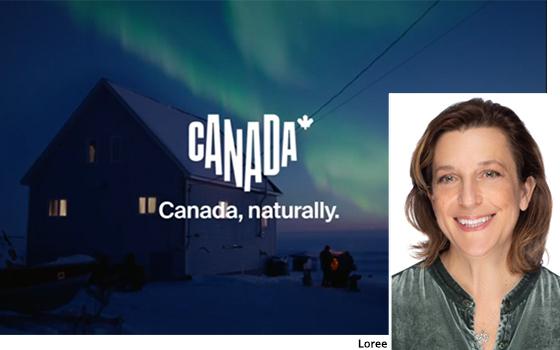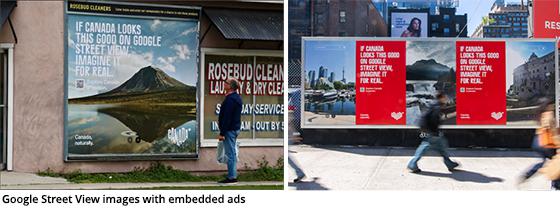
Gloria Loree, SVP, Marketing Strategy & CMO also
shares why the tourism board prioritized unfiltered experiences in their rebrand and used Google Street View as part of their campaign.
1. Destination Canada unveiled a new brand and
tagline, Canada, naturally. What was the
strategic insight that prompted this shift toward centering on authenticity and unfiltered experiences?New research from our global traveller
segmentation program revealed a powerful global consumer insight: In a world that feels increasingly fake and filtered, Highly Engaged Guests (HEGs) instinctively seek what is real and
authentic.
- Proof point: HEGs are 65% more likely than other travellers to seek out destinations that feel unique and authentic (Source: Global Segmentation Data).
Canada, naturally. is a direct response to this new global insight. With our target guest at the heart of our strategy, we’ve evolved our brand to deliver
what they are craving: connecting with what is real and authentic. We see Canada, naturally. As an antidote to an overly curated world. A world filled with fake
news, overly curated social feeds and AI generated images. The Canada, naturally. campaign reflects Canada’s unfiltered beauty and quiet confidence. It’s raw, real,
and effortlessly inspiring—no gloss or overproduction needed.
2. The campaign incorporated Google Street View as part of its storytelling approach. What inspired the
collaboration with Google and what impact did that have on messaging?
At its core, our brand is a promise that Canada connects travellers with what’s real, and
it doesn’t get much more real than the unfiltered images on Google Street View. So, as we explored ways of bringing the Canada brand to life, we asked Google if we could use their images in an
out of home campaign. They said yes (and that no one had ever asked to use them before!). So, in what turned out to be a first-of-its-kind national tourism campaign, we used Google Street view instead
of high-gloss visuals in out of home placements in NYC and LA. It was a bold creative choice that reflects and reinforces our core value of authenticity, and that’s what inspired the messaging.
Simple and to the point. “If Canada looks this good on Google street view, imagine it for real!”

3. At our last Travel & Hospitality Summit you spoke about the launch of
the Canadian Tourism Data Collective. Destination Canada moved from an 18-month data lag to 6-month time for predictive insights. What
infrastructure or talent investments made that possible?
Yes, that metric refers to one of our flagship data products: the Lodging Aligned Spend Reporting (LASR),
which is part of the Canadian Tourism Data Collective.
Lodging Aligned Spend Reporting (LASR) provides detailed tourism spending estimates at the national,
provincial/territorial, regional (122 regions), and city level (189 cities). These estimates are refreshed monthly and disaggregated by spending category and market of origin (domestic
province/territory or international country).
Importantly, LASR integrates machine learning models to forecast spending up to six months into the future. This predictive
capability enables Destination Canada and our partners to make forward-looking decisions with greater confidence, rather than relying on outdated historical trends.
The
transformation from a typical 18-month lag in spend estimates to near real-time monthly reporting and six-month forecasts into the future was made possible by strategic investments in three key
areas:
The Canadian Tourism Data Collective and the supporting technology infrastructure
Talent and expertise – we built a multi-disciplinary team with expertise in data science, data engineering, tourism economics,
and product management, delivering products designed with end-user needs in mind
- Partnerships and Product Design – LASR was co-developed in
partnership with tourism experts in Canada, ensuring it meets the operational and strategic needs of destination management organizations across Canada.
4.
From a marketing perspective, how has access to real-time data changed the way you plan and measure campaigns? Real-time data has transformed our approach to
campaign planning and measurement. It allows us to optimize while campaigns are live—adjusting creative, reallocating budget, and targeting high-value segments based on live performance signals.
Paired with Marketing Mix Modeling, we balance short-term agility with long-term strategy, ensuring we maximize both effectiveness and efficiency. We no longer wait for post-campaign
reports—decisions happen in the moment, making every media dollar work harder.
5. What is one region or place in Canada you believe is underrated and deserves more attention from
travelers?
I will answer this in a different way: when I am travelling in Canada, wherever I am, I think to myself, “why don’t more people know about
this neighbourhood, gallery, resort, roadway?” In other words, I have come to realize that my favourite spot or experience is the one I am on, in any season. I connect with locals, have an
authentic experience, and know how fortunate I am to be there. And I know I will tell a story of that place that will get someone else to go there. I love what I get to do for a
living.
If you’re interested in submitting content for future editions, please reach out to our Managing Editor, Barbie Romero at Barbie@MediaPost.com.